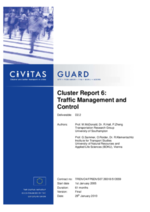EGNOS/Galileo services for public transport control and information
Summary
Global navigation satellite systems were tested as means to provide specific support to surface public transport systems.
Implementing sustainable mobility
A group of small and medium-sized aerospace companies carried out a trial of technological tools using EGNOS (European Geostationary Navigation Overlay Service) systems in order to improve the performance of navigation equipment installed in buses. The general objective of the measure was to validate the feasibility of the use of global navigation satellite systems (GNSS) (such as EGNOS and Galileo) to support the exploitation of surface public transport.
Based on the characteristics of EGNOS and Galileo (better accuracy, improved availability and better continuity of service), it was supposed that the use of EGNOS and Galileo signals would reduce the installation and maintenance costs of existing bus equipment, based on the on-board electronic sensors supported by GPS.
The measure therefore aimed to prove that innovative GNSS technologies would contribute to reducing exploitation costs (operation and maintenance) and to improving the efficiency and reliability of the service for users by reducing the amount of electronic equipment on board the buses and by deploying GNSS terminals on all buses, potentially assisted by additional external data computed by a dedicated control centre.
Progress
The measure was implemented in four phases:
- a test of GNSS performance in real conditions in Toulouse;
- a Galileo simulation trial in the greater Toulouse area;
- definition of users’ requirements and recommendations for future systems, including the design of future public transport management systems; and
- dissemination activities.
At the end of these three phases and over the months that followed, dissemination activities were carried out to promote the results in other European cities willing to learn about the potential added value of EGNOS and Galileo systems in the management of public transport systems.
Due to the nature of the measure, no impact evaluation was carried out: only the functionalities were evaluated. The measure aimed to evaluate the performance of GNSS in analysing the effectiveness of public transport. The evaluation dealt exclusively with GNSS performance indicators and comparison with actual requirements for positioning in public transport exploitation systems.
Outcomes
The trial demonstrated the reliability of the technology, confirming that future bus management systems should mainly rely on GNSS.
The simulations revealed that, with the use of several constellations such as GPS and Galileo, GNSS receivers will be able to use about 15 to 20 satellites at any time and in all parts of the city. This combination will provide a global availability of positioning, with a high level of accuracy and integrity, enabling new transport-related services.
Optimal use of GNSS would require modification of the communication means between buses and the monitoring centre. The location frequency report is too low with respect to expected GNSS accuracy. Consequently, it was difficult to analyse the impact of accuracy improvement on the system.
The use of GNSS has potential impacts on many services and consequently is closely tied to other measures of the project, such as a bus priority scheme or multimodal traveller information system.
The measure was conducted in the favourable context of regional GNSS industry and market development and benefited from the complementary skills and expertise of stakeholders in the GNSS field and the transport sector. Policy leaders and decisions makers showed a lot of interest in the implementation and results of the measure, and this encouraged and motivated all stakeholders.








